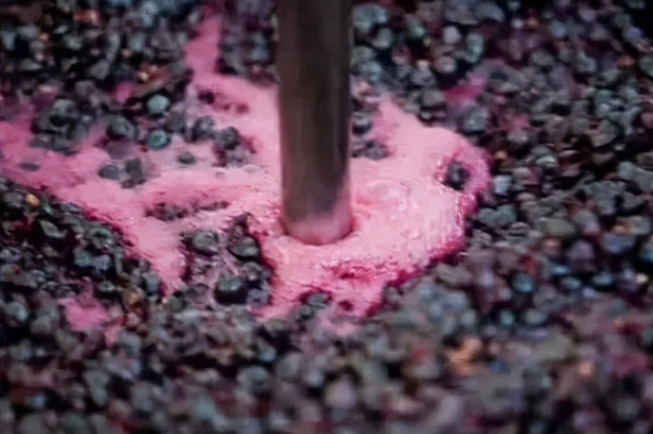Sulphur dioxide (or other sulphur compounds) has long been an important food additive, and the levels in wine are much lower than in some packaged foods or even dried fruit. So what is the significance of sulfur dioxide in wine?
What is sulfur dioxide?
Sulfur dioxide is the most common and simplest sulfur oxide. It is a kind of food additive allowed to be used at home and abroad. Today, sulfur dioxide is more in the food industry to play a role in color protection, corrosion, bleaching and oxidation resistance, but at home and abroad there are strict requirements on the dosage. In other words, just enough is allowed.
Sulfur dioxide. Wine has to use sulfur dioxide. To understand why wine contains sulfur dioxide, you need to know how the wine was made.
Wine is now fermented from grape juice. Grape juice contains a lot of sugar, which yeast converts into alcohol during fermentation. So, the more fermentation, the more complete the transformation, the more alcohol and less sugar in the final product 39bet-xì dách-phỏm miền bắc-tiến lên miền bắc-xóc đĩa-game bắn cá.
The amount of sugar remaining determines how dry a wine is. For example, "dry red" is a red wine with very low sugar content, while a wine with high sugar content is called "sweet wine". Different "dryness" and other trace components, such as tannins and polyphenolic compounds, make up the difference.
 1. The sterilization
1. The sterilization
There are many unnecessary bacteria or fungi in wine fermentation. These fungi can have the same (unnecessary) effect on the biochemical changes of grape juice as the yeast applied by the winemaker.
The addition of sulfur dioxide CAN REDUCE SUCH WORRIES FOR WINemakers because it inhibits the growth and viability of many strains, while leaving out the yeasts that promote alcoholic fermentation.
2. Prevent oxidation
It is the oxygen in the air that forms the "killing" relationship with the sulfide. Grapes or grape juice, as a fresh raw material, is very easy to over-oxidize (not fresh enough, even rot, etc.) if completely exposed to air. As a result, wine is almost always fermented in a closed environment.
There is no doubt that the presence of sulfur dioxide provides a layer of "protective film" for fresh raw materials, which can combine with raw materials before oxygen, and then prevent the reaction between raw materials and oxygen. As a result, wine almost always needs sulfur dioxide to protect itself during the winemaking process and to maintain its fresh color. It is worth mentioning that even natural wines advocated without additives must use sulfur dioxide to prevent premature decay.
3. Is the sulfur dioxide in wine harmful to humans?
According to the World Health Organization, the amount of sulfur dioxide inhaled per person should be limited to 0.7mg per kg per day. Otherwise, the human body will be poisoned. At the same time, wine with high levels of sulfur dioxide can also give off an unpleasant smell such as rotten eggs. But not all wines have sulfur dioxide in them.
Only a small number of wines in the world are made without the addition of SO2. Such wines are generally red wines, which have higher tannins than sweet and white wines and are already more resistant to corrosion and oxidation.
In general, making wine without any sulfur dioxide is risky, expensive to produce and, crucially, not necessarily very good. For most winemakers, there is also too much unpredictability. Perhaps the whole wine will be spoilt, perhaps the wine is unstable and prone to deterioration. Therefore, wine without SO2 should be consumed as early as possible, as continued aging can easily lead to bacterial growth and cause the whole wine to spoil.
In addition, wines without added sulfur dioxide may have faint gamey or unusual odors, such as rat odor. Because there is no sulfur dioxide present, the odor is produced in malolactic fermentation. In addition, the wine with zero addition of sulfur dioxide may also have a serious bottle deviation phenomenon, even if the same batch of wine is difficult to ensure the same taste and quality.
Most wines will add a moderate amount of sulfur dioxide in order to maintain the life of the wine, so sulfur dioxide can not be used as a standard to judge the quality of a wine, can only be said in the case of no impact on health and taste, then to judge the quality of wine.
There is no doubt that "sulfur-free" winemaking is a high-wire act, and even after hundreds of years of development, no better alternative has been found than sulfur dioxide.
